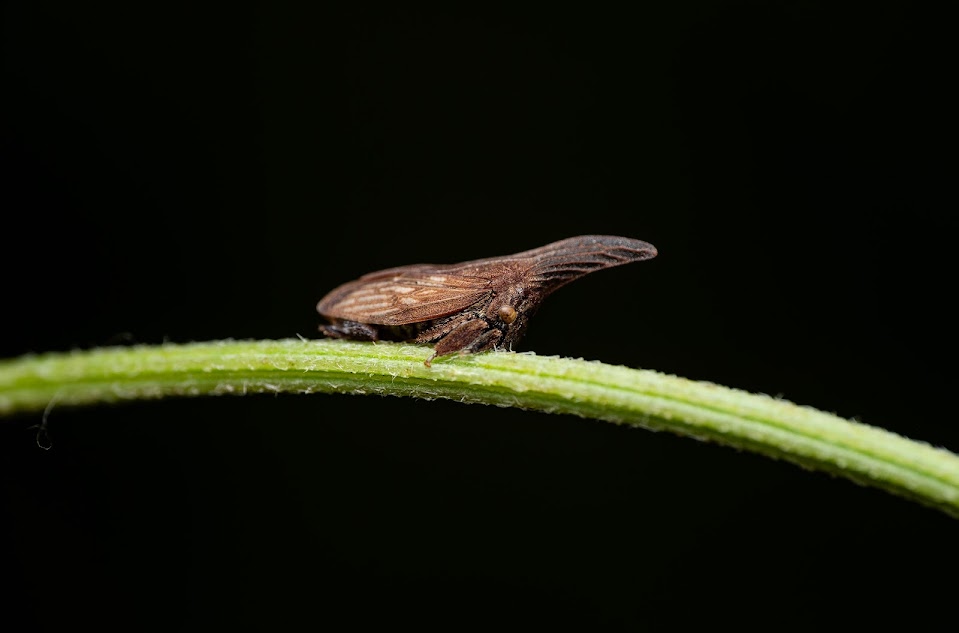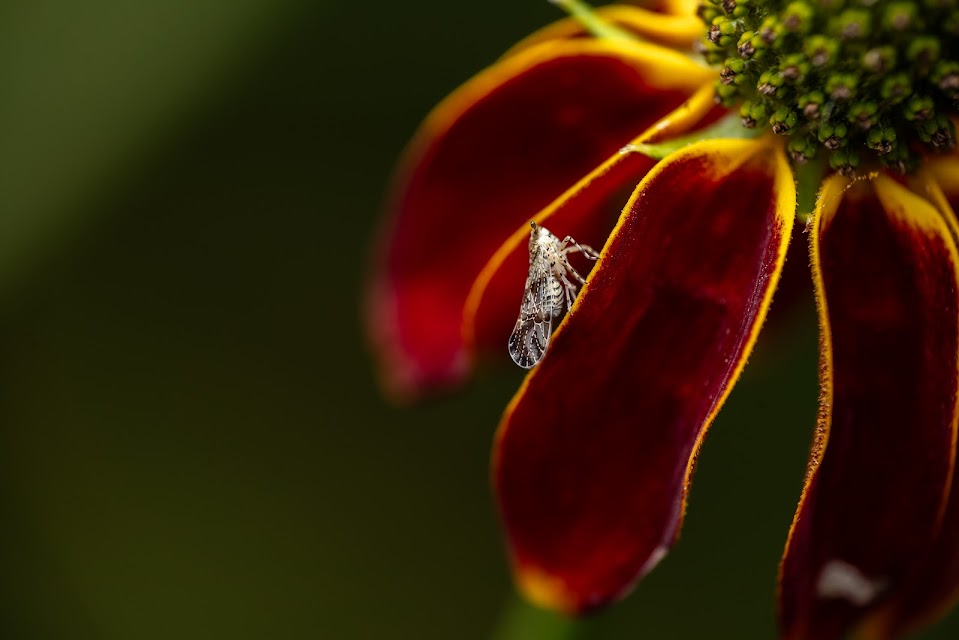
By Monica Macoubrie, Wildlife Education Specialist
You might not give a second thought to a small insect leaping past your face or parkouring off your arm while you’re tending to your garden. Most people consider these hopping insects mere nuisances, but a closer look reveals their vibrant, often camouflaging, colors and complex interactions with the environment. These are the hoppers: leaf hoppers, plant hoppers and even tree hoppers.
Although leaf, plant and tree hoppers are often confused with one another, they belong to distinct families within the “true bugs” classification. While many true bugs do feed on garden vegetables and ornamental plants, earning them a reputation as pests among farmers and gardeners, this article aims to highlight the fascinating characteristics of these tiny, ornate insects.
True Bugs
True bugs, classified under the order Hemiptera, includes a variety of families, such as cicadas, leaf hoppers, plant hoppers and shield bugs. One of the defining features of true bugs is their specialized mouthparts, known as stylets, which are adapted for piercing and sucking fluids from plants or other organisms. These mouthparts are often enclosed within a beak-like structure.
True bugs also possess a unique wing structure: Their front wings are typically hardened at the base and membranous at the tips, forming a configuration known as hemelytra. This wing structure provides both protection and flexibility.
True bugs exhibit a range of body shapes and sizes, from the flattened bodies of leaf hoppers to the more robust forms of shield bugs. Their life cycles generally include three stages—egg, nymph and adult—without a pupal stage. The nymphs usually resemble miniature adults and undergo several molts before reaching maturity.
True bugs are found in a variety of environments and can be herbivores, predators or scavengers, playing niche roles in our ecosystems as pollinators, decomposers and, in some cases, pests affecting agriculture and horticulture.
Jumping Ability
With a name like “hopper,” it’s no surprise that these insects can leap great distances. But just how far can they jump, and how do they achieve it? Young plant hoppers can leap around 3 feet in a single bound. While this might not sound impressive to humans, it’s astonishing when you consider their entire body is only a few millimeters long.
Young plant hoppers, or nymphs, use gear-like structures with interlocking teeth on their hind legs to synchronize their movements during high-speed jumps. These structures enable their hind legs to move within 30 microseconds of each other during a launch, a stark contrast to the two- to three-millisecond delay observed in grasshoppers. This research conducted by Malcolm Burrows at the University of Cambridge shows that this precise coordination allows nymphs to propel themselves about 10 feet, or 3 meters, per second. Without these specialized structures, nymphs would spin uncontrollably if one leg moved before the other.
Plant Hoppers vs. Leaf Hoppers
Leaf hoppers and plant hoppers, while both belonging to the Hemiptera order and sharing some similarities, exhibit distinct differences in their morphology and behavior. Leaf hoppers, members of the family Cicadellidae, are typically characterized by their small size, often ranging from 2 to 8 mm, and their flattened, wedge-shaped bodies. They exhibit a unique appearance with prominent, sometimes colorful patterns or markings that provide camouflage.
Leaf hooppers’ feeding habits involve using their specialized mouthparts to pierce plant tissues and extract sap, which can lead to characteristic damage, such as stippling (when leaves have a spotted appearance) and the yellowing of leaves.
In contrast, plant hoppers belong to the family Delphacidae, and they tend to be slightly larger and have more varied body shapes, often with a more pronounced, angled or triangular profile. Their feeding behavior also involves piercing plant tissues to feed on sap, but they are known for their ability to produce a notable frothy substance, which can be seen on the plants they infest.
Plant hoppers’ life cycles and developmental stages can vary, but they often exhibit more pronounced jumping abilities compared to leaf hoppers. Additionally, plant hoppers are sometimes associated with the production of a frothy mass around their feeding sites, which is less common among leaf hoppers.
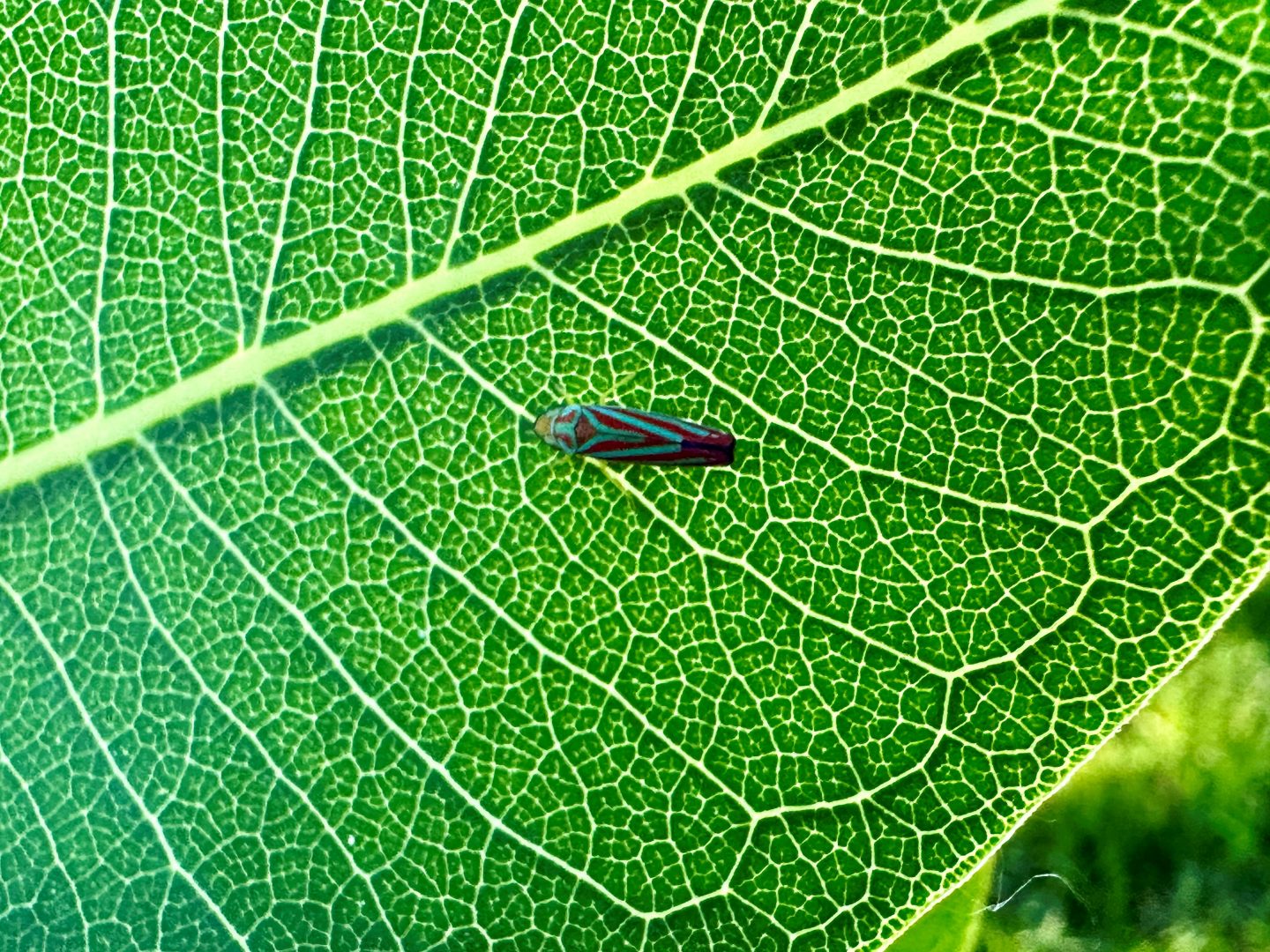
Northern Flatid Planthopper (Flatormenis proxima)
Primarily found in eastern and central North America, this plant hopper inhabits grassy and brushy areas, forest edges and mixed hardwood forests. It feeds on various ornamental and agricultural plants, including walnut, which deem it of minor economic importance. While the insects can appear in large numbers, they cause minimal damage to plants and are not known to transmit plant diseases.
Leaf and plant hoppers are intriguing insects with distinctive features and behaviors that influence both ecosystems and agriculture. Their impressive leaping abilities and feeding habits can result in significant plant damage and disease transmission, posing challenges for gardeners and farmers alike.
However, these insects also play vital roles in food webs and ecosystem dynamics. By adopting integrated pest management practices that combine cultural, biological and, when necessary, chemical controls, we can effectively manage their populations while minimizing harm to plants and the environment.
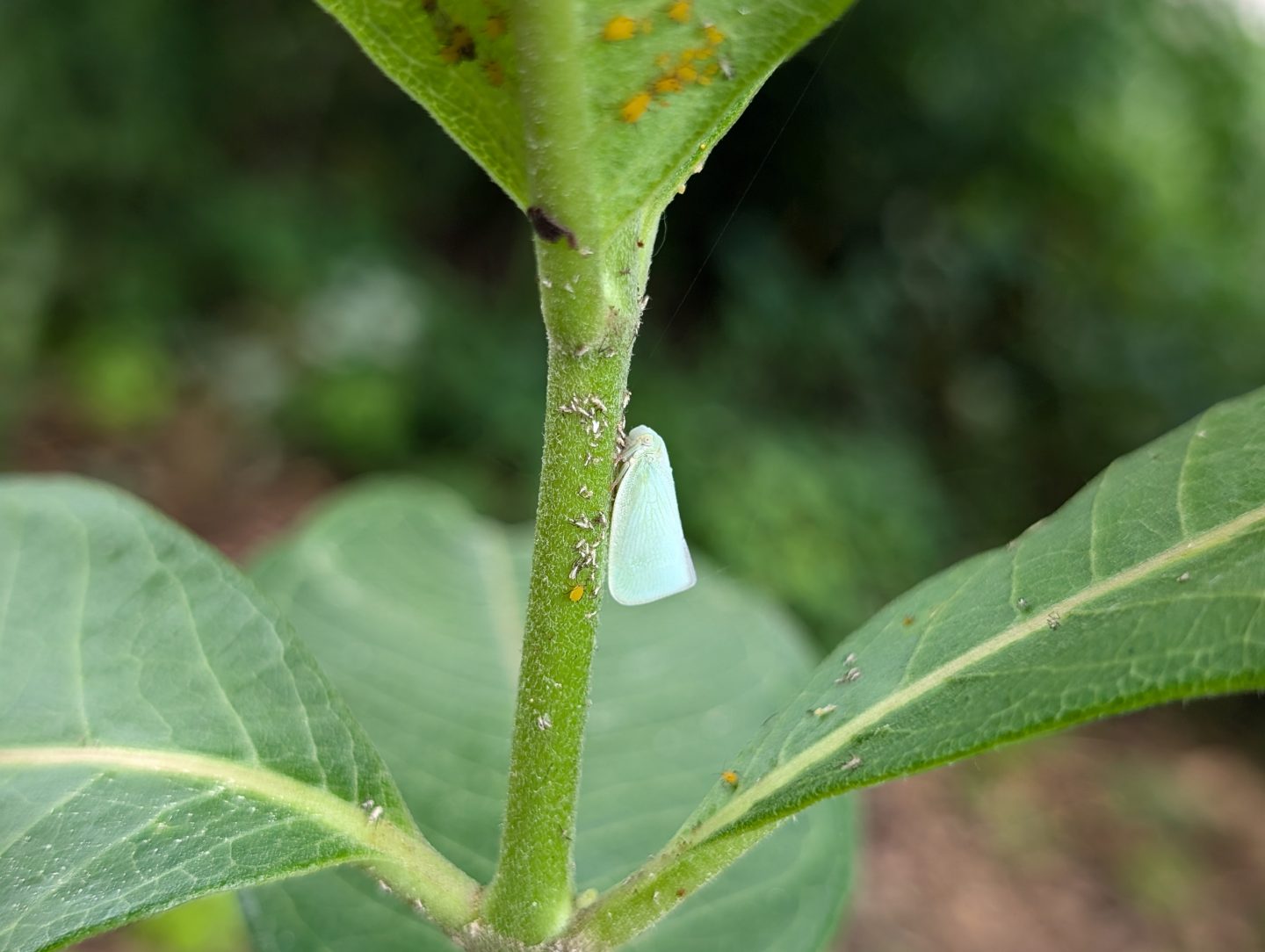
Treehoppers
Treehoppers, part of the family Membracidae, are intriguing insects renowned for their often elaborate physical features. These small- to medium-size insects, typically ranging from 4 to 15 mm in length, are easily recognizable due to their pronounced, horn-like structures or exaggerated body projections, which can resemble various shapes such as spikes, plates or ridges. These unique adaptations serve as camouflage or deterrents against predators. Treehoppers possess specialized mouthparts adapted for piercing and sucking plant sap, and their feeding can sometimes cause deformities or stunted growth in plants.
The nymphs of treehoppers are equally fascinating, often covered in waxy or fibrous substances that offer protection and camouflage. Research indicates that treehoppers use vibrations to attract mates, signal the discovery of a good feeding site or alert a defending mother to approaching predators.
Buffalo Treehopper (Stictocephala bisonia)
Buffalo treehoppers are easily recognizable by their green hue and distinctive humpbacked shape, resembling a bison. They have large heads with horn-like black-tipped protrusions. Their backs are brown and yellow with a “tail” structure, and their green bodies are speckled with light yellow spots. Related to cicadas, these treehoppers have wings that enable them to swiftly move between plants, where they lay eggs and feed.
In the summer, males attract females with a sound inaudible to humans. Females create curved incisions in fresh stems or beneath leaves to deposit eggs. The emerging nymphs feed on plant sap, often causing the stems to collapse. Nymphs and adults share similar structures, though younger nymphs may have pink antennae, a white powdery coating and short spines, all of which fade over time.
Adults feed on sap from various plant parts, leading to wilting and potential death of crops, garden plants and ornamental species, making them significant pests. Active in summer, they congregate in autumn to overwinter in debris and leaf litter.
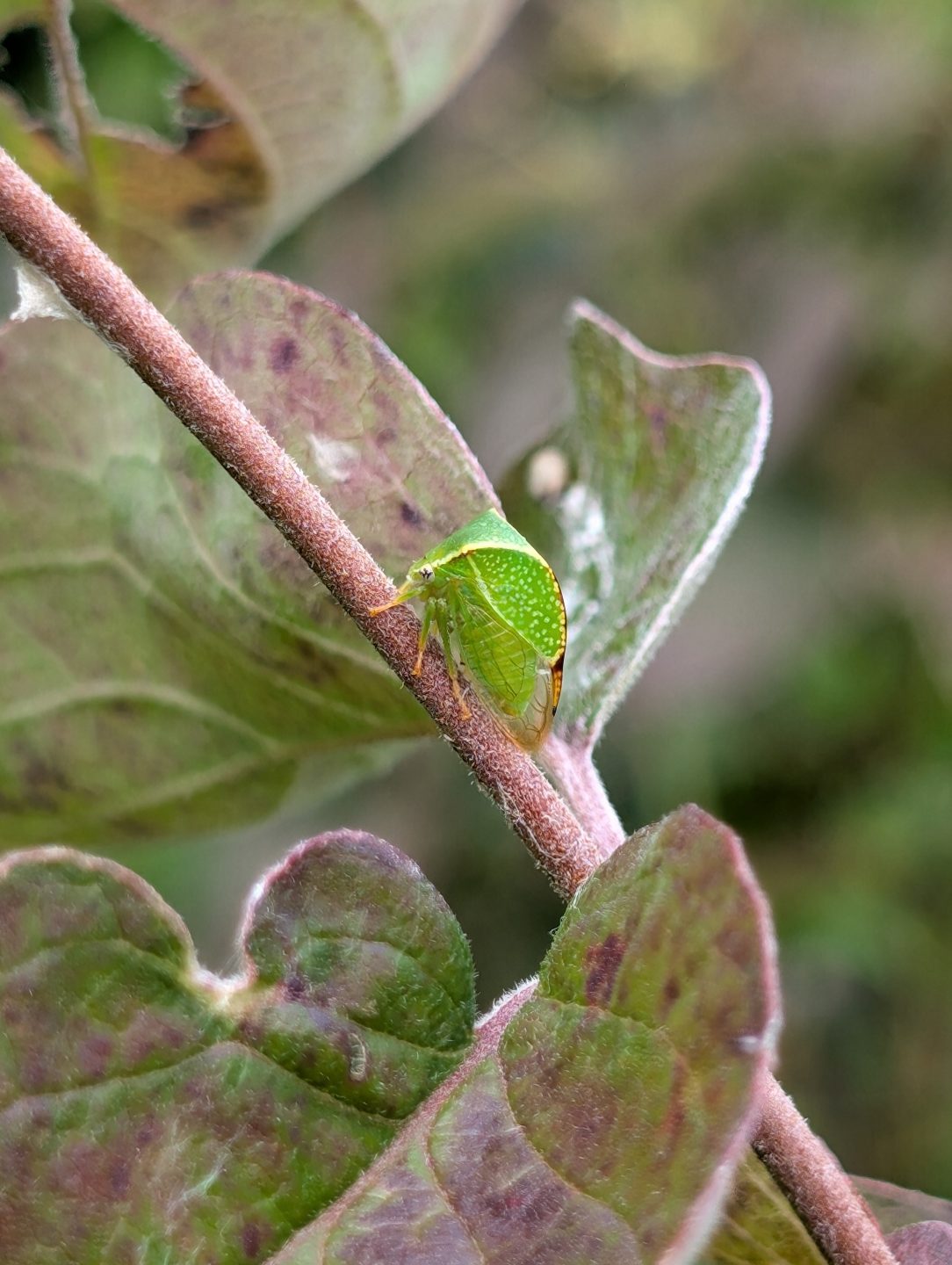
Honeylocust Treehopper (Micrutalis calva)
This small species exhibits notable color and pattern variation, with two distinct forms. The dark form has a predominantly black pronotum (part of body behind the head) with a pale tip, while the light form has a reddish-brown pronotum. Both forms feature a pale yellowish face, subtle wing venation and pale legs with a black base. They are found across the eastern and central United States, Canada and the American Southwest, typically near mixed hardwood forest habitats. This species feeds on various plants, including ragweed, sunflower, wormwood, sycamore, alfalfa and honeylocust.
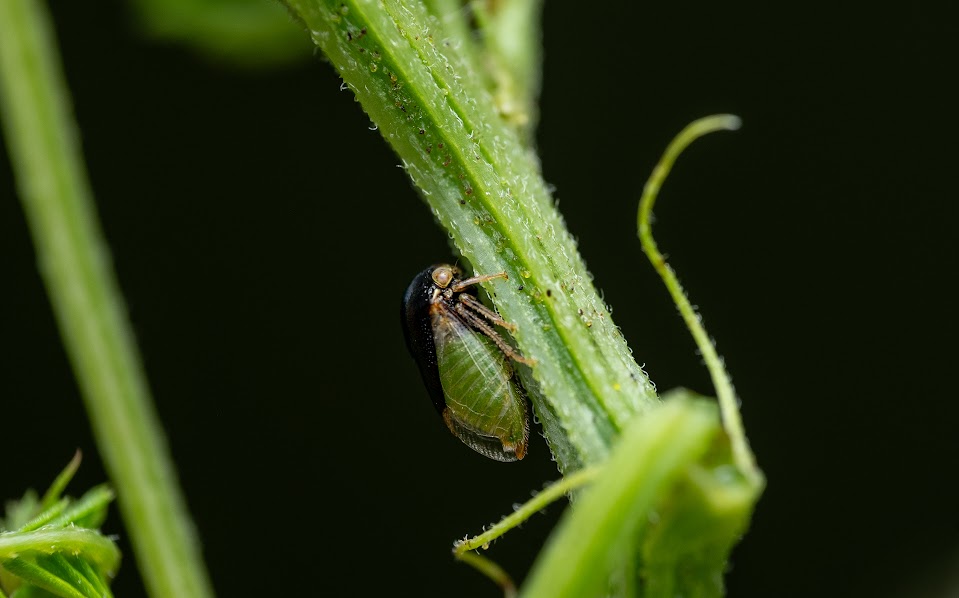
Wide-footed Treehopper (Enchenopa latipes)
This treehopper, unique in the eastern United States for its forward-pointing horn, is easily identifiable. Adults are dark-colored, from reddish-brown to nearly black, with rufous wing edges and spiny hind legs. Their front legs are leaf-like, appearing as wide “feet.” Females are about 9 mm long with a prominent horn, while males are smaller, around 7.5 mm, with a shorter horn.
Distinctive nymphs have green abdomens with dark spines along the top and vary in color from light brown to black with gray mottling, depending on age. This species inhabits fields, grassy areas, brushy regions and forest edges.
